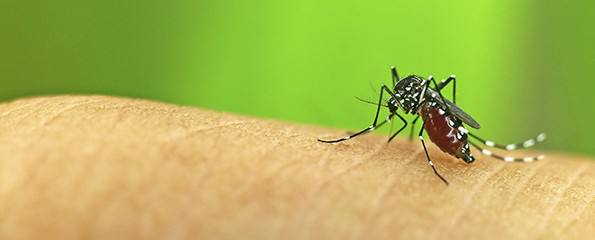Changing patterns in deadly mosquito-borne disease
Curtin University research has revealed changing infection patterns for potentially deadly Murray Valley Encephalitis Virus (MVEV) and suggested a refined warning process might be needed for the mosquito-borne disease.
Associate Professor Linda Selvey, from Curtin’s School of Public Health, was the lead author of a collaborative study, which examined circumstances around the 17 confirmed cases of MVEV that occurred in Australia in 2011.
Following record wet season rainfall in many areas, the MVEV activity in 2011 was categorised as high-level in south-eastern Australia for the first time since 1974 and there was also unusually high activity in northern Australia.
There were nine cases in Western Australia – including one death – and the locations of infections ranged from the Kimberley, to the Pilbara, the Midwest and the Goldfields.
The 2011 MVEV activity also included two infections in north-western New South Wales and another two in South Australia’s Riverland region, one of which was fatal.
“The 2011 incidences of MVEV demonstrated continued change to the demographics of those infected with the virus,” Associate Professor Selvey said.
“Between 1975 and 1999, 66 per cent of those infected were children and 63 per cent were Aboriginal.
“But between 2000 and 2011, the percentage for both children and Aboriginal people infected was just 21 per cent.
“Of the 17 cases in 2011, 14 were adults and 14 were non-Aboriginal. And, interestingly, seven of the infected people did not reside where they presumably picked up MVEV and were either tourists or people temporarily employed in the areas.”
Associate Professor Selvey said three Australian fatalities in 2011,as a result of MVEV, were clear evidence of the need for public awareness of the disease.
The majority of MVEV infections result in either no symptoms or minor symptoms (such as headaches, muscle pain and occasional rashes).
But those that result in clinical encephalitis can lead to fever and convulsions, headache, malaise and an altered mental state, which may be followed by progressive neurological deterioration.
“The case fatality rate was similar to 1974, which likely reflects the lack of advancements in treatments for MVEV, beyond supportive therapy in intensive care,” Associate Professor Selvey said.
“Public health warnings in areas of MVEV already advise people to avoid mosquito exposure but it may also be necessary to refine warnings to target very high mosquito exposure activities, such as fishing at dusk or camping near rivers and creeks.
“Consideration should also be given to additional social marketing should high-risk climatic conditions occur.
“Most of all, there is a need to remain vigilant. The Sentinel Chicken Surveillance Program is used to track MVEV and in 2011, for the first time since 2000, it was found as far south as Leonora and Dongara in WA and in the Alice Springs area, for the first time since 2002.”
(Source: Curtin University)
Dates
Tags
Created by:

 Login
Login














